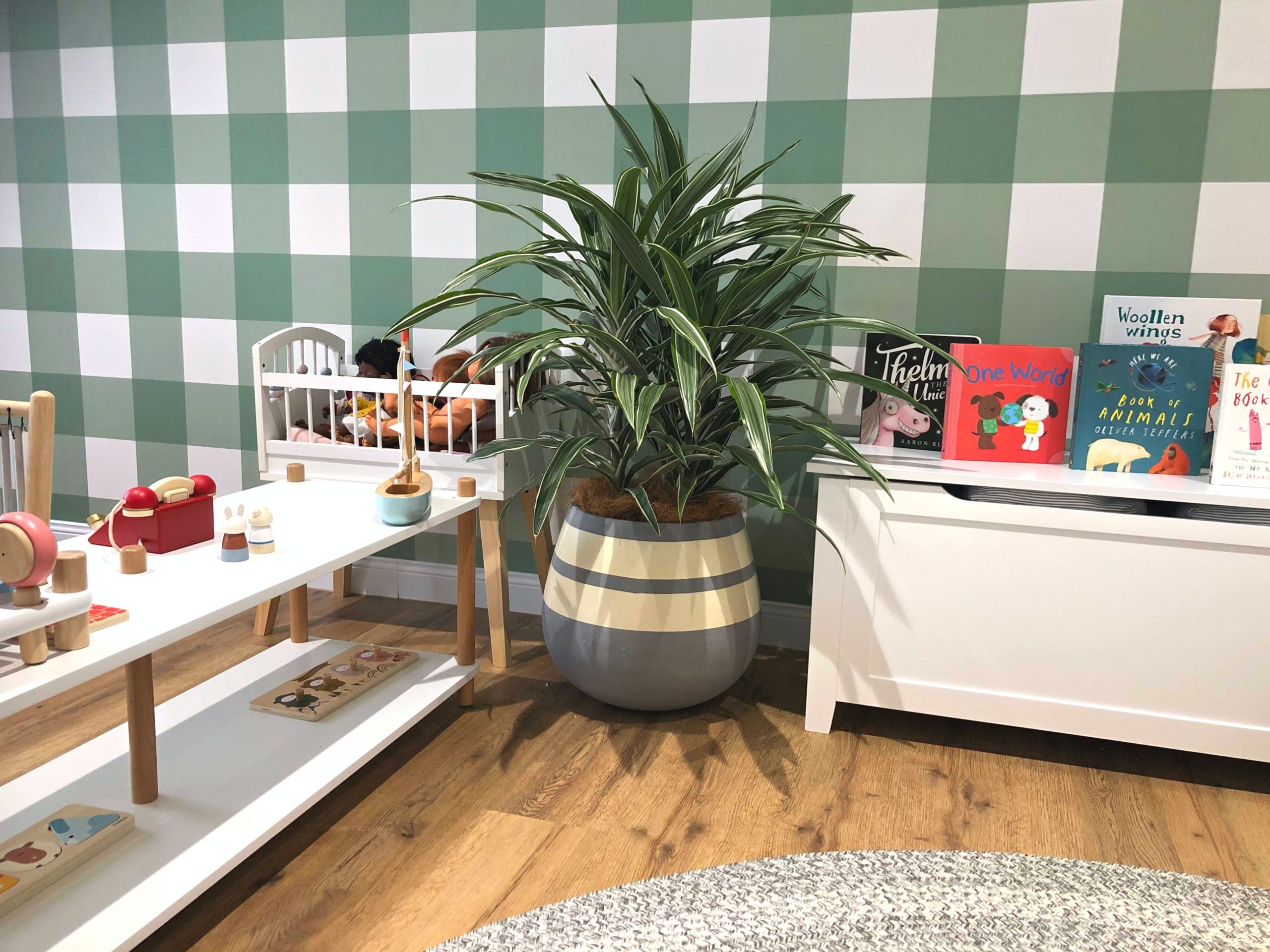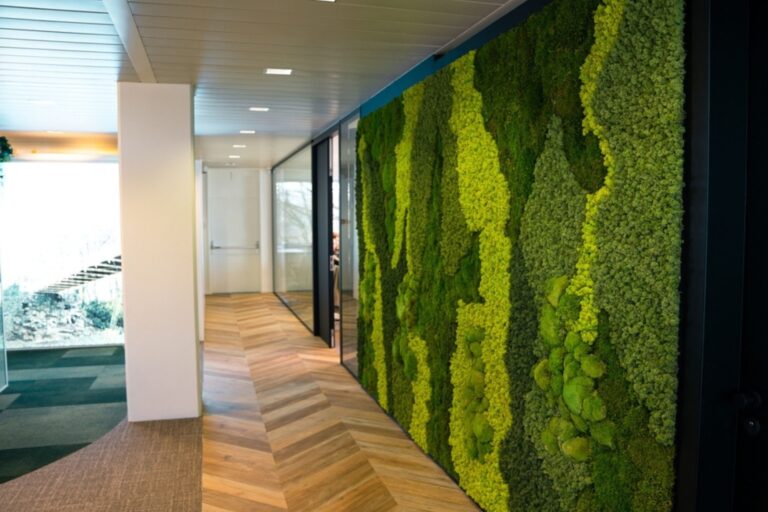Are you looking for safe, non-toxic indoor plants for your child care centre? There are so many benefits to bringing indoor plants into your early learning rooms, and yet the stakes couldn’t be higher when the care of babies, toddlers and pre-schoolers are involved.
While very few indoor plants are actually fatal (and usually only when consumed in large amounts), you’ll be surprised to learn how many of our favourite indoor plants can cause skin irritations, upset tummies, swelling, vomiting and diarrhoea in little ones when ingested. Top offenders include the popular Philodendron, Pothos, English Ivy, Dieffenbachia, Peace Lily and Zanzibar Gem.
Of course, if you’re plant lover and can’t help yourself, protective strategies from baby nom-noms may include placing them in hanging baskets or up high on a shelf out of grabby range. But when you’re a early childhood educator or centre manager, nothing will beat the peace of mind of knowing there are no plants in your centre that can harm the children in your care.
Okay, thanks. I wasn’t concerned before, but now I am! Are indoor plants around children really worth it then?
Well, the answer to this is really up to you but, of course, we think so! The health benefits of indoor plants for all humans outweigh any negatives, so long as you’re aware of what those negatives are and how to mitigate risk (that is, don’t eat them!).
It fact, you may instinctively just *know* that children will benefit from a natural (biophilic) environment, which is why you’re here. However, when you’re justifying the cost to head office it helps to know exactly what the science says:
Beyond pleasing aesthetics, living indoor plants clean our air (Kazemi et al, 2020), boost our mood (An et al, 2016), improve concentration, reduce sickness (Bringslimark et al, 2007) and stress levels (Lee et al, 2015).
Moreover, “nature is critical in children’s formative years” and helps them to form social bonds through collaboration (Well & Evans, 2003). Coupled with daylight, biophilic elements can also help children learn 20-26 per cent faster and increase test scores (Heschong, 1999; 2003).
While test scores are not a concern at the early childhood level, the overall health benefits of plants and plant care are well researched and rooted in our innate connection to nature.
So without further ado, with the help of our horticulturists, we’ve compiled a list of our top five non-toxic indoor plants for children to enjoy.
1. Dracaena Deremensis
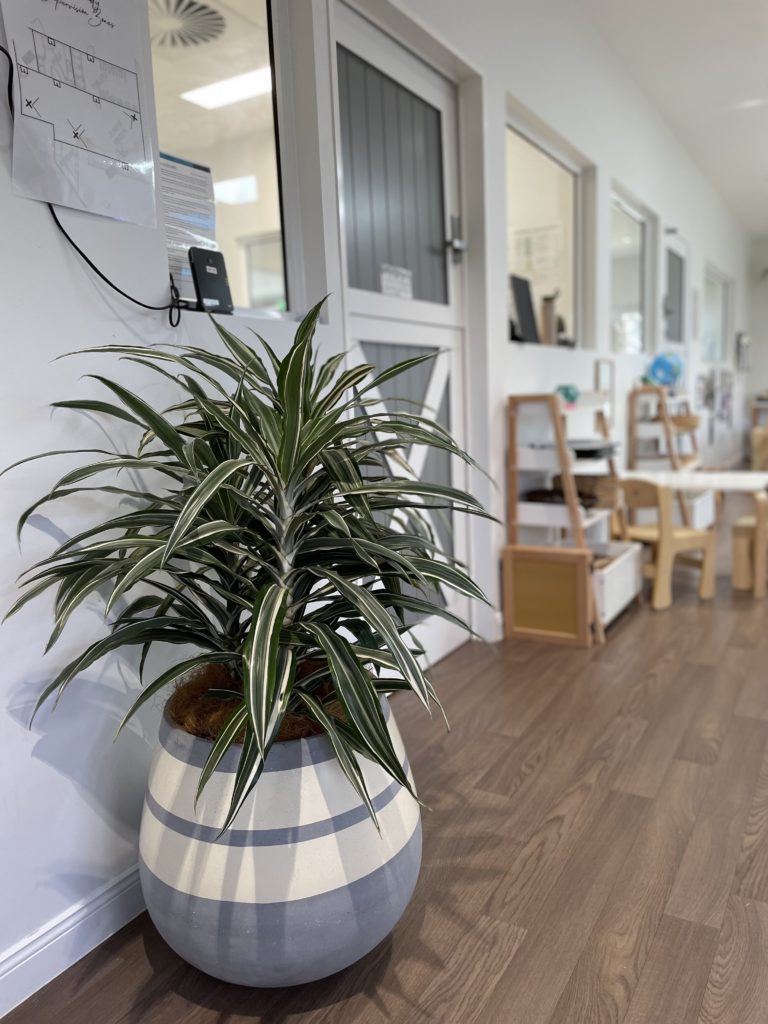
Hardy and low maintenance, the air purifying Dracaena Deremensis enjoys bright, indirect light and watering every 7-10 days.
What happens if children eat it: Ideally, children will learn not to eat or ingest indoor plants, even ones deemed “safe” and “non-toxic”. But we live in the real world and kids will be kids. If ingested, symptoms are unlikely. The University of Nebraska-Lincoln has listed Deremensis as “non-toxic” to children, with no more toxicity than vegetable matter.
Note: They have been listed as TOXIC to pets.
2. Parlour Palm
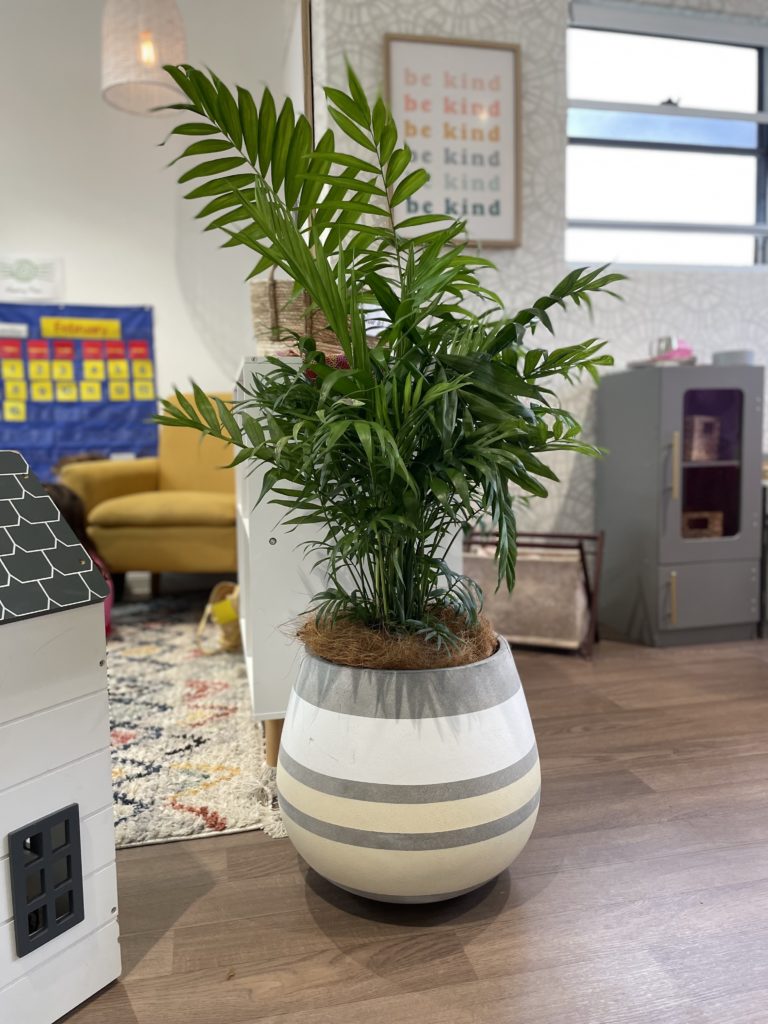
Tolerant of lower light, the tropical Parlour Palm is sensitive to overwatering and prefers to err on the side of dry. Beautiful and lush, it will lift the mood of any space with its tall, soft foliage.
What happens if children eat it: Little to nothing, again “symptoms are unlikely.” The Parlour Palm (botanical name Chamaedorea elegans) has also been listed by the University of Nebraska-Lincoln as non-toxic to children.
Note: They have also been listed as non-toxic to pets.
3. Dracaena Fragrans (Happy/Corn Plant)
Commonly referred to as the “Happy” or Corn plant, Dracaena fragrans thrives in filtered light and a routine watering schedule of every 1-2 weeks.
What happens if children eat it: Similar to the Deremensis, the Happy has been listed as non-toxic and unlikely to cause any symptoms in children if ingested.
Note: They have been listed as TOXIC to pets.
4. Sansevieria (Snake Plant/Mother-in-Law’s Tongue)
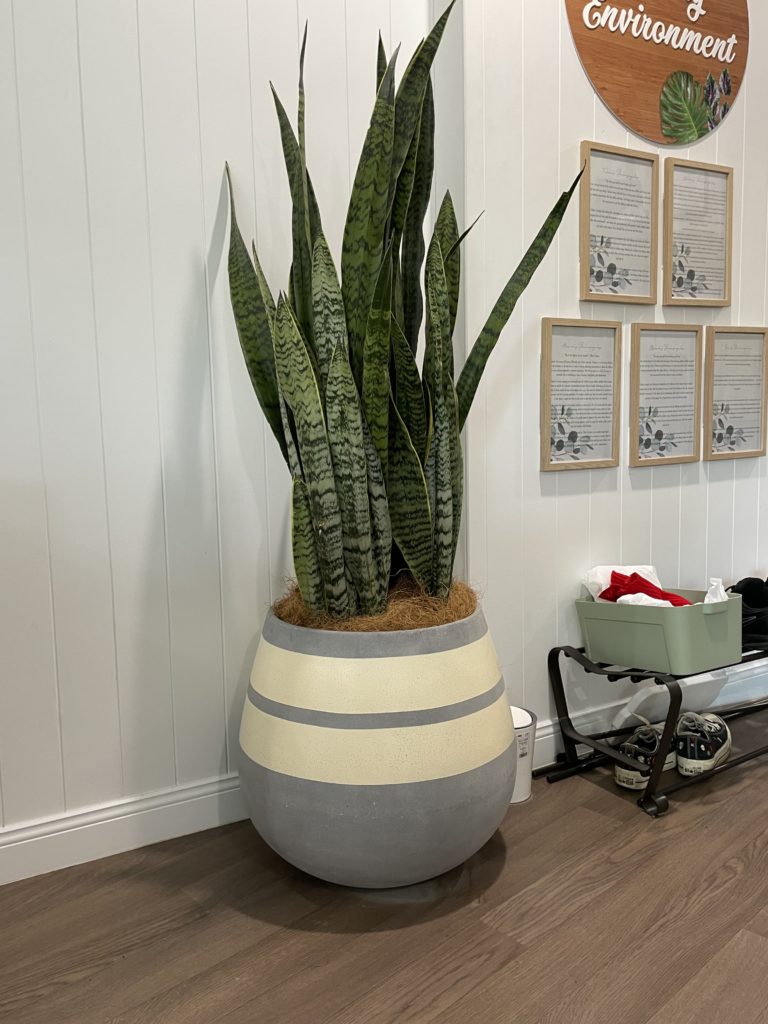
Well-known for its hardiness, the Snake plant needs little watering and sunlight to thrive. Flexible to its lighting placement, it will grow best in bright, indirect light with watering every fortnight.
What happens if children eat it: Again, not much! The Snake plant has made the list of non-toxic plants for children, unlikely to cause any harm.
Note: They have been listed as TOXIC to pets.
5. Aspidistra Elatior (Cast Iron Plant)
Featuring broad, dark green leaves, the ever-resilient Cast Iron Plant thrives in low-light conditions and is perfectly content with infrequent waterings.
What happens if children eat it: Another “not much” scenario. Although it’s best enjoyed as a decorative accent, accidental nibbling is unlikely to cause any harm
Note: They have been listed as non-toxic to pets.
And there you have it! While there are many more than five, non-toxic indoor plants suitable for childcare centres available—these are our top pick based on plant care experience and availability in the Brisbane, Gold and Sunshine Coast areas.
We hope you feel empowered now to bring the outdoors in to your early learning space without having worrying about the safety of your guard. Heaven knows, no parent or educator needs another incident report in their life!
Looking for long term (child-friendly) indoor plant hire in South East Queensland? Rent indoor plant and pot combinations from just $50 a week (including plant maintenance and free replacements) or find them at your local nursery.
